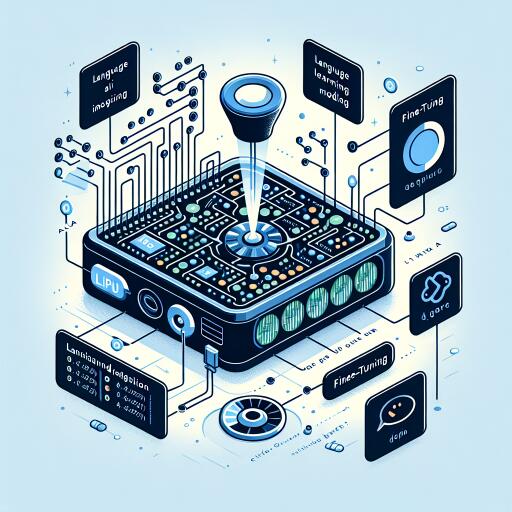Fine-Tuning a Large Language Model on a Single GPU: The Role of QLoRA in AI Innovation
The landscape of artificial intelligence (AI) is consistently evolving, with advancements pushing the boundaries of what machines can learn and how they can apply this knowledge. Among these developments, Large Language Models (LLMs) like ChatGPT stand at the forefront, offering insights and interactions that increasingly mimic human-like understanding and responsiveness. However, as impressive as these models are, their broad knowledge base can sometimes be a double-edged sword—especially when the task at hand requires a specific set of knowledge or a particular nuance of language understanding.
In response to this challenge, the concept of fine-tuning emerges as a cornerstone aspect of AI evolution. Fine-tuning allows these already intelligent systems to become even more specialized, catering to niche demands and scenarios with greater accuracy. However, the process is not without its difficulties. The computational load of fine-tuning LLMs is immense, often requiring significant hardware resources that are not readily accessible to everyone. It’s within this challenge that QLoRA, a novel fine-tuning approach, reveals its value.
Understanding Quantization in QLoRA
The magic behind QLoRA lies in a technique known as quantization. Quantization, in the context of AI and machine learning, is about efficiency and optimization. It involves taking a wide range of values and mapping them into a more manageable set of categories or buckets. This process is crucial for fine-tuning language models because it significantly reduces the computational burden without sacrificing the model’s performance.
By reimagining the fine-tuning process through quantization, QLoRA enables the optimization of LLMs like ChatGPT on hardware that’s far less robust than the server farms typically required for such tasks. This innovation opens up new possibilities for AI practitioners working with limited resources or those who wish to experiment with customizations on standard hardware setups, such as a single GPU computer system.
The Significance of Fine-Tuning with QLoRA
Fine-tuning an LLM for a specialized purpose is not just about making it better—it’s about making it more relevant and more applicable to specific use cases. The power of LLMs comes from their broad understanding and their ability to generate human-like text based on that understanding. However, when an LLM is finely tuned with a technique like QLoRA, it doesn’t just understand broadly; it understands deeply within the context it has been tuned for. This depth of understanding can significantly enhance the usability and effectiveness of AI applications, from customer service chatbots to more nuanced applications such as legal analysis or creative writing assistance.
QLoRA’s approach to fine-tuning, with its focus on quantization, presents a highly accessible path toward customizing LLMs. This technique reduces the need for excessive computational power, making it an attainable endeavor for individuals and organizations that do not have access to large-scale computing facilities. Through QLoRA, the democratization of AI customization becomes a tangible reality, enabling a wider range of innovators to contribute to the field.
Final Thoughts
The continual development of AI and machine learning models hinges not only on creating more complex and comprehensive systems but also on refining these systems to serve specialized needs better. QLoRA, with its innovative take on quantization for fine-tuning, represents a significant stride towards more accessible and efficient AI customization. As technology continues to advance, techniques like QLoRA will play a crucial role in ensuring that the benefits and advancements of AI are within reach for researchers, developers, and hobbyists alike, regardless of their computational resources.
By lowering the barrier to fine-tuning LLMs, QLoRA not only broadens the scope of what’s possible within AI development but also invites a more diverse group of participants into the conversation and creation of tomorrow’s AI innovations. It’s a reminder that the future of technology is not just in the hands of those with the most powerful tools, but also in the minds of those who can think differently about how to use what they have to achieve incredible results.









